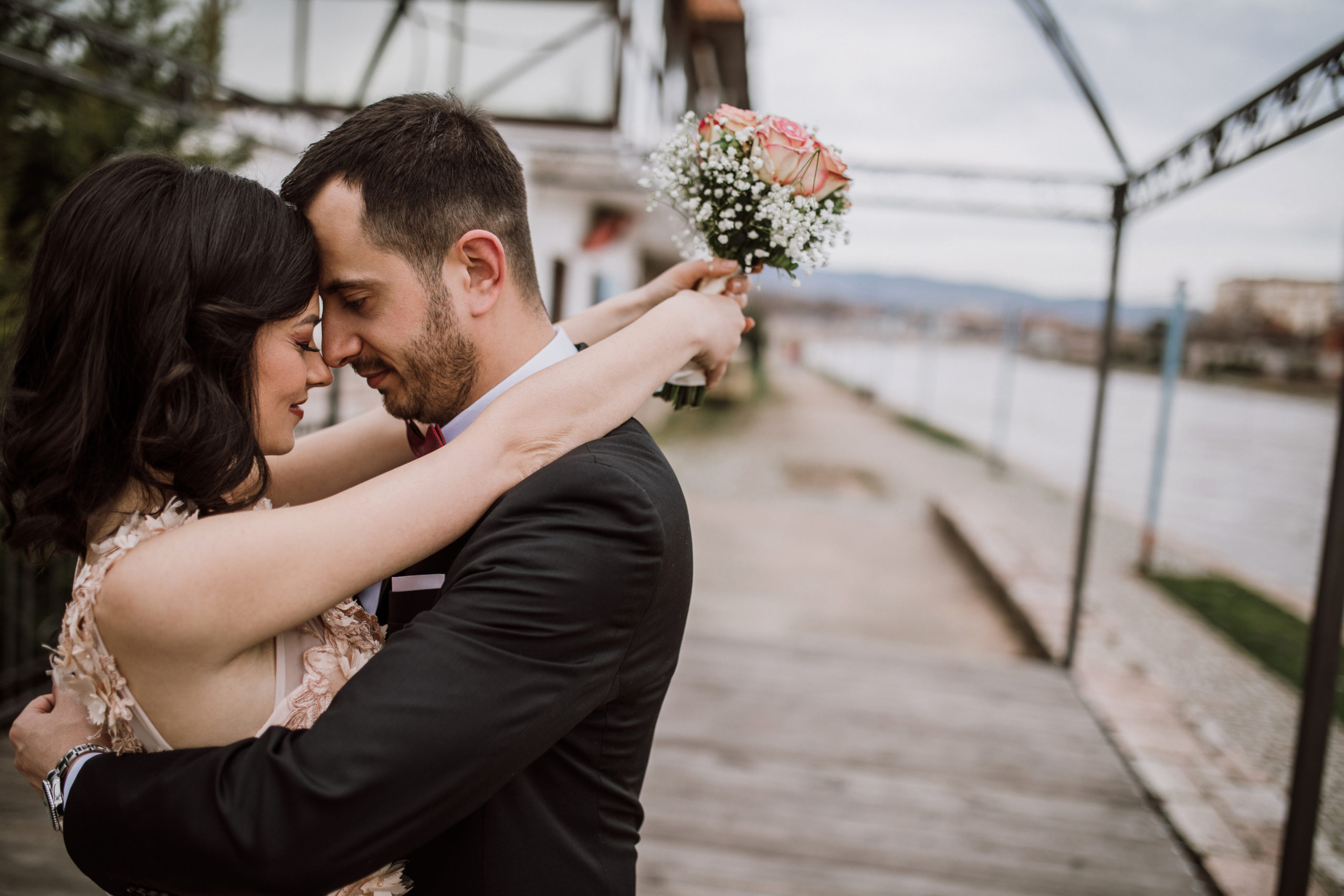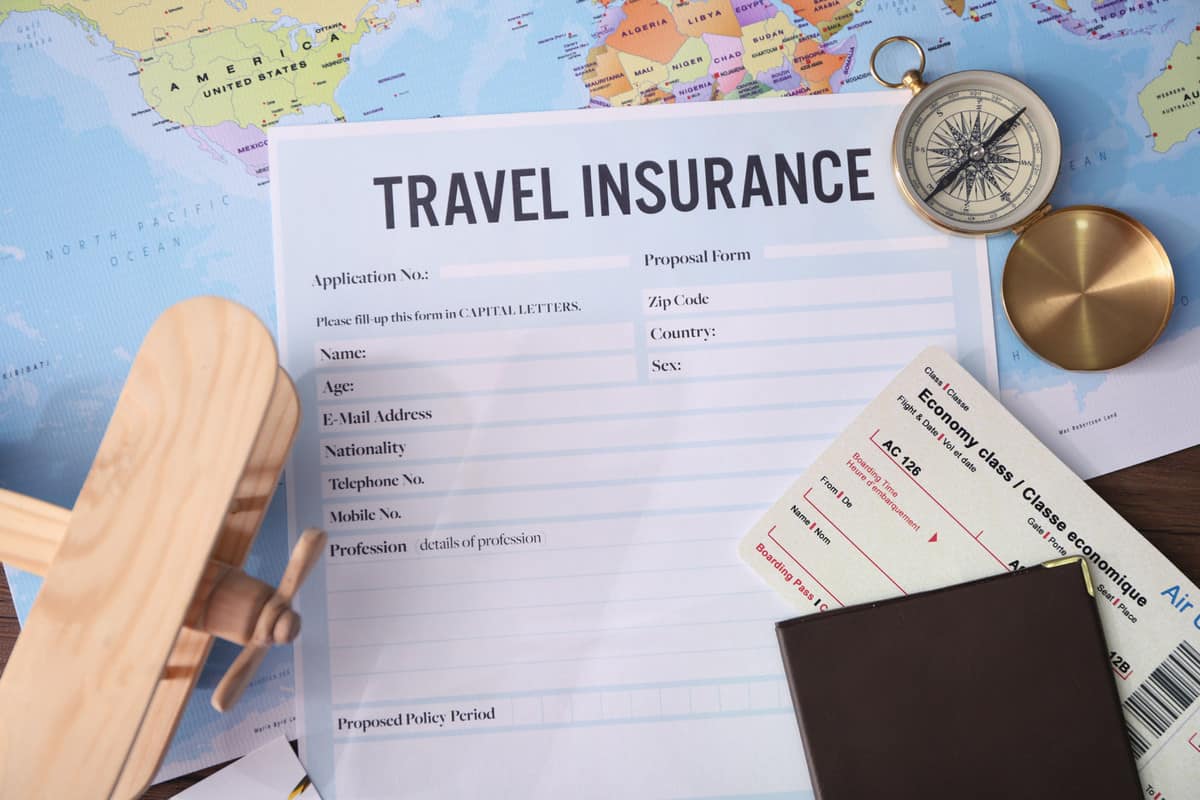Congratulations! You’re newly engaged or married, with some serious new sparkle on your finger. Getting ring insurance probably doesn’t sound like the most exciting to-do right about now, but it’s pretty important.
About half of couples spend less than $5,000 on the engagement ring, but 20% drop over $10,000, according to WeddingWire’s 2020 Newlywed Report. As a one-time purchase, that’s already a lot to pay — however, your wallet can hurt even more if you need to replace or repair a ring.
Engagement ring insurance can potentially save the day if your ring gets lost, damaged, or stolen. Let’s take a look at how to insure engagement rings and wedding bands:
- What Is Engagement Ring Insurance?
- How To Insure a Ring
- Tips for Keeping Your Engagement Ring Safe
- The Bottom Line on Ring Insurance
What Is Engagement Ring Insurance?
Engagement ring insurance is like other forms of insurance: It protects you financially against a potentially large cost. In this case, we’re talking about the cost of repairing a damaged ring or replacing the ring if it gets lost or stolen.
How does it work?
Engagement ring insurance helps mitigate the loss, damage, or theft of your ring. While it’s possible to cover your engagement ring using your homeowners insurance policy, companies that specialize in jewelry insurance can offer you a policy that includes more expansive coverage.
Here’s how it works: You’ll purchase coverage, file a claim if something happens to your engagement ring, settle things with your insurance company, and receive a check to get reimbursed for your loss. Repairing or replacing your engagement ring may be a little more complicated, requiring you to work with specific jewelers or repair services and providing certain paperwork.
Who needs ring insurance?
You might wonder if insuring your ring is worth the cost. Do you really need engagement ring insurance? Here are some signs it could be a good idea:
- You’d want to replace your engagement or wedding ring if it were lost, damaged, or stolen.
- You’re more likely to damage or lose a ring. For example, a partner might be in a profession that can be rough on rings, or perhaps just more forgetful than average.
- The ring would cost more than $1,500 to replace. If that’s the case, it’s unlikely that the ring will be fully covered by an existing renters or homeowners insurance policy. Without extra insurance, you’d be stuck with higher costs to replace or repair a ring.
- You have a diamond engagement ring — and 87% of couples do, according to WeddingWire’s 2020 Newlywed Report. Diamond engagement rings cost an average of $3,500 to $5,000, which is a lot of money to lose. Jewelry insurers will usually cover a variety of cases, from mysterious disappearances to accidents where a diamond falls out of your ring.
Of course, not everyone fits into the above categories, and others might place little meaning in a ring and not feel attached to it. Couples who wouldn’t be in a rush to replace an engagement ring may have less of a need for insurance.
For many people, however, engagement rings and wedding bands are among the most significant symbols of love — and the most valuable. If you’re in this group, purchasing ring insurance can be a smart move to protect your ring and could make it far more affordable to replace it if needed.
When to buy ring insurance
It’s best to purchase insurance as soon as you buy the engagement ring — even before popping the question! Getting engagement ring insurance in place helps ensure you’re protected against mishaps or misfortune from the start.
Costs of engagement and wedding ring insurance
The cost of engagement ring insurance and other jewelry insurance isn’t too steep. Generally, you’ll pay about 1%-2% of the value of the ring in yearly premiums. So, if you have a $5,000 engagement ring, for example, you could expect to pay $50 to $100 per year for ring insurance. There are also other factors that influence your annual insurance cost, like where you live and the size of your deductible.
“A ‘premium’ is the amount of money you pay for any form of insurance,” says P.J. Miller, a partner, vice president, and chairman of the board at Wallace & Turner, an independent insurance agency in Springfield, Ohio. “A ‘deductible’ is the amount you will be responsible for as your ‘share’ of your insurance claim.”
Some insurers offer plans with a $0 deductible, which means you don’t have to pay out of pocket if something terrible happens. However, you’ll likely end up paying higher premiums instead. If you’re looking to lower your premium costs, you may want to pick a plan with a higher deductible.
How To Insure a Ring
If you’ve purchased other types of insurance before, shopping for engagement ring insurance is similar. Here are four steps to insuring your engagement ring and choosing the right amount of coverage.
1. Find out what your insurance already covers
If you’re paying for homeowners or renters insurance, you might already have some coverage for jewelry. In fact, I made a claim under my standard renters insurance policy to get $1,500 toward replacing a stolen ring. It wasn’t the full value of the ring, as I didn’t have additional ring insurance, but it definitely helped take the sting out of having a treasured possession stolen.
You should check with your insurer to see what level of coverage is provided by your homeowners or renters policy. Most insurers will generally pay around $1,500 to replace a ring, according to the Insurance Information Institute.
Make sure to also ask about which causes of loss are covered. Most homeowners or renters insurance policies only provide coverage for loss due to reasons like theft or fire — not accidents like leaving your ring behind in a hotel room.
2. Compare engagement ring insurance policies
If you want more coverage than what your existing policies offer, you can look into these two options:
- Add a rider or floater policy to your existing renters or homeowners insurance. Purchasing this additional coverage will allow you to insure the full value of your wedding or engagement ring with no deductible. It also expands the causes of loss that your insurance will cover to include mysterious disappearances.
- Purchase a stand-alone jewelry insurance policy. This engagement ring insurance will be separate from other policies you may have and protects you from financial loss if something happens to your ring.
As you’re shopping around for engagement ring insurance policies, Jean Dousset, a fine jeweler based in Los Angeles who specializes in diamond engagement rings, advises that you find out how long the insurance company has been in business and whether your jeweler recommends the company.
“Your jewelry insurance is only as good as the company standing behind it so you want to make sure you are working with a reputable company,” Dousset says.
Well-known jewelry insurance companies include Jewelers Mutual, Zillion, and Lavalier. Make sure to compare specific insurance rates, deductibles, and offers to ensure you’re getting the coverage you need while minimizing out-of-pocket costs.
Here are some questions you may want to ask when choosing an insurance provider:
- Are you covered if the engagement ring is stolen?
- Is the ring covered if you lose it?
- Is the engagement ring covered for all types of damage?
- Are you covered if the diamond or another piece falls out?
- Which incidents aren’t covered under the policy?
- Does the insurance cover your ring while you’re traveling internationally?
- If the ring needs to be replaced, will they reimburse you?
- If you are reimbursed, is it for the full price that you originally paid?
- Do you get to choose the jeweler who may end up repairing or replacing your ring?
- What evidence will you need to submit to file a claim?
If you’re planning to cover a ring under your homeowners insurance policy, Dousset also recommends researching if it extends to damage or loss outside of the home.
3. Prove your engagement ring’s value
Insurers will require proof of your ring’s value to cover it. Providing this could be as simple as printing your receipt — if your ring was newly purchased.
If you have an antique or one-of-a-kind heirloom piece and you aren’t sure how to find out how much your ring is worth, you’ll need to get it appraised to assign the ring a value for insurance coverage. Most insurers can recommend an appraiser or gemologist to provide this service.
“In almost every case of valuable jewelry, it is imperative to have the jeweler provide an appraisal on your jewelry item,” Miller says. “Think of the process you’ll go through when your ring is lost, stolen or damaged beyond recognition — do you know the weight, color, clarity and all those important features that your professional jeweler will have included in the detailed appraisal?”
For diamond ring insurance, it’s also a good idea to get a diamond evaluation or grading report (or a copy of it if your stone is already graded). The stone will likely be the most valuable and expensive part of your ring, and quality can vary significantly from diamond to diamond. A diamond grading report can make it easier to prove the quality of the stone so you can keep it properly insured.
If you decide to upgrade your ring, then you’ll need to get it appraised again so that your insurance policy covers its current value.
“Don’t forget to have the appraisal updated every so often to keep up with the changes in value,” Miller says. “At some point, you’ll want to have your ring inspected for damage, weak prongs, etc.”
4. Choose a policy — and read the fine print
Once you’ve compared insurance companies and provided proof of your ring’s value, you’re ready to choose an engagement ring insurance policy. Carefully review the agreement, including the fine print, to fully understand the terms before you agree to them.
Take note of when you’re entitled to make a claim, too. Make sure to keep copies of all relevant documents related to your ring in a safe place — including your original receipt or appraisal, diamond certificate, and policy agreement. That way they’ll be easily accessible in case you need to file a claim.
Tips for Keeping Your Engagement Ring Safe
In addition to buying ring insurance, there are other measures you can take to protect your engagement ring.
“If you aren’t wearing your engagement ring, make sure to store it in unlikely places for optimal safety,” Dousset says. “Jewelry boxes are an obvious place for thieves to look. If you are traveling, consider keeping your engagement ring at home or store it in a hotel safe.”
He also advises clients to take off their engagement rings before swimming.
“Fingers constrict in water, making rings more likely to fall off,” Dousset says.
The Bottom Line on Ring Insurance
Engaged couples have enough to manage with planning a wedding and building a foundation for their future marriage.
You don’t want to find yourself wishing you had insured your ring when you had the chance. It can be worth spending the time and money to protect your engagement or wedding rings — and your peace of mind.



